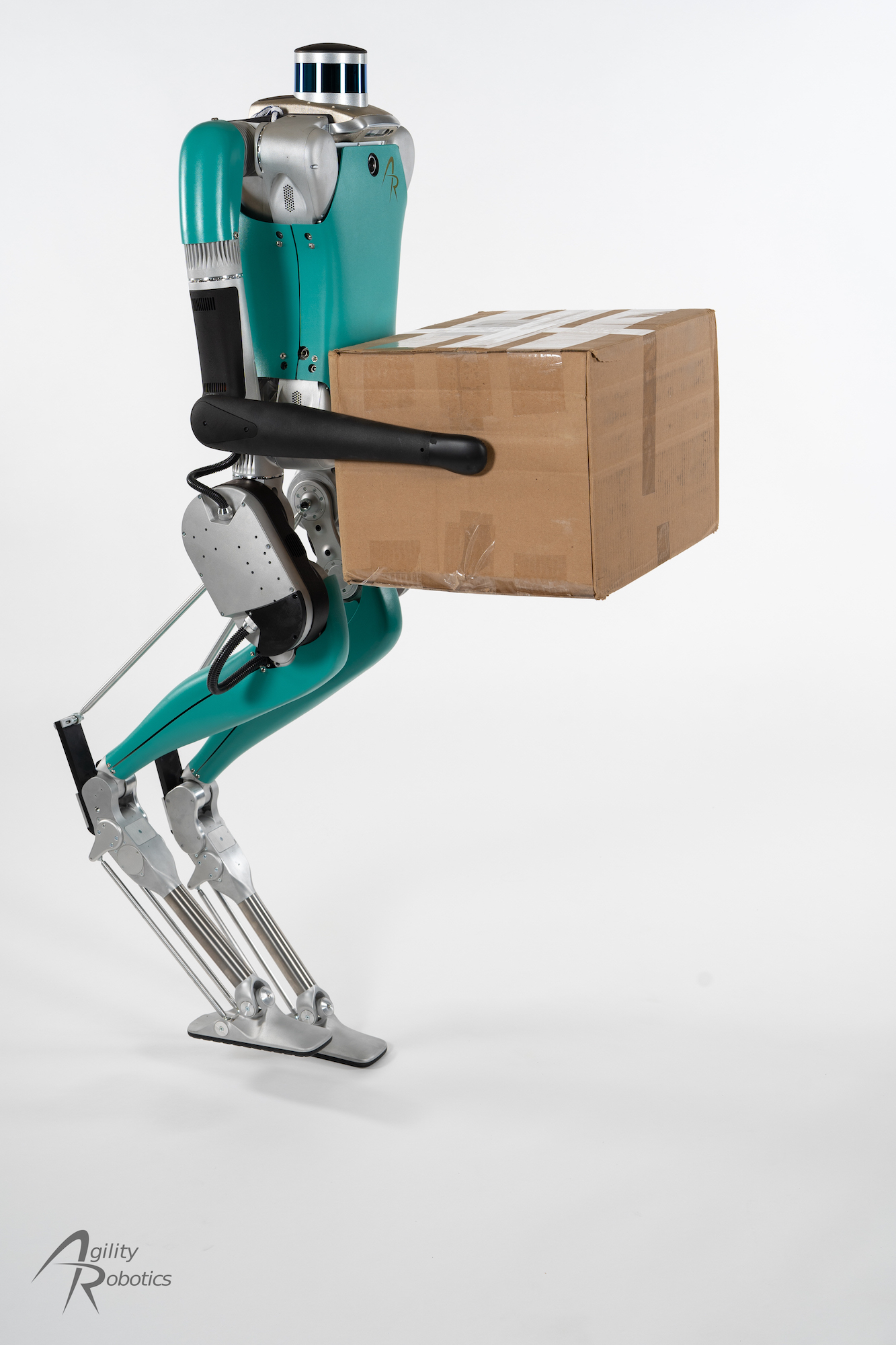Agility Robotics acquired $20 million from investors in their latest investment round co-led by California investment collective DCVC and venture fund Playground Global, according to their latest press release. This new investment pool will allow the Albany, Oregon-based robotics startup to increase production numbers of their highly-celebrated bipedal robots designed to work alongside humans in logistics, retailer and manufacturing environments.
Agility was founded in 2015 on the backs of 11 years of robotic development at Oregon State University’s Dynamic Robotics Laboratory by Carnegie Mellon graduates Dr. Jonathan Hurst and Dr. Damion Shelton. One of their earliest models was the ATRIAS robot, a bipedal robot that made headlines in 2015 for being the first bipedal robot to accurately reproduce human gait. ATRIAS was able to withstand physical force, such as kicks and impacts, without falling over.
Their next model was the Cassie robot, also developed in the Dynamic Robotics Laboratory. Cassie was a massive leap forward in bipedal locomotion in comparison to ATRIAS. It was around this time Agility was formed from the team that worked on Cassie at OSU, existing as a subsidiary of the university, which still owns a part of the company to this day. Agility sold and distributed Cassie models to some of the top universities throughout the world, implementing them in logistical environments as well as robotics labs for further research and development.
Cassie helped put Agility on the map, securing them $8 million in funding in a 2018 investor pool led by Playground Global. Using the new funding, Agility upgraded Cassie, developing new features and an enhanced sense of locomotion, allowing for outdoor traversal and complex behavior such as navigating up and down stairs. Although not particularly useful as a robotic assistant, Cassie fulfilled an important role in the development of Agility’s next robot.
Since the retirement of the Cassie model in 2019, Agility has produced the Digit model, a complete anthropomorphic robot akin to those developed by MIT’s Boston Dynamics Laboratory. Digit is capable of more advanced spatial awareness as well as locomotion of the arms, picking up objects and transporting them with a similar form factor to that of a human. Agility has since partnered with Ford Motors to continue development on automated package delivery systems using Digit.
“If robots are going to be effective and useful to us, they’re going to have to work on our terms in our space,” said Hurst, CTO and co-founder of the company, in a new video about Agility’s mission moving forward. “Digit is going to be able to do a wide variety of different tasks—things like package handling in warehouses, indoor and outdoor delivery, inspecting hazardous workplaces or any application that requires the basic abilities and shape of a person.”
In the near future, Agility plans to implement Digit robots into more environments and situations throughout the globe. However, rather than a substitutive measure of replacing human workers with robots, Agility aims to integrate Digit alongside humans.
“Over time, we believe Agility’s robots will transform the way we deliver goods, essential items like food and medicine, and even services to more people for less money, all while safely and respectfully empowering human co-workers along the way,” stated DCVC Managing Partner Matt Ocko in the company’s press release on the new investment.
Board member Bruce Leak added “[…] we know all too well the challenges facing retailers and logistics companies in hiring hundreds of thousands of people during surges in demand like the current pandemic.”
With the high price point of $250,000 for a Digit unit, the $20 million investment should allow the 34-person team to increase their workforce as well as up their production numbers, distributing more units to universities and companies across the globe.
“You’re going to see robots delivering packages, [you’re going to see them] back in warehouses doing the back room work, getting to be more and more useful and helpful in our lives,” Hurst said.






